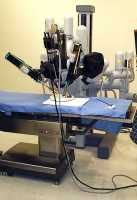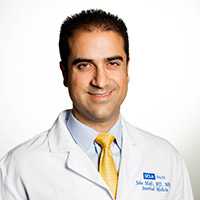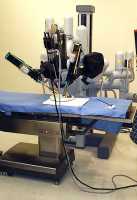Americans Support Gene Therapies Even If They Cost More

MedicalResearch.com Interview with:
Wayne Winegarden, Ph.D.
Director, Center for Medical Economics and Innovation
Pacific Research Institute
MedicalResearch.com: What is the background for this poll? Would you tell us a little about the Center for Medical Economics and Innovation?
Response: Recent press reports have focused on how extensive innovative gene therapies can be. PRI was interested in learning where Americans stand on these cures of the future, and commission a new national opinion survey to find out.
The Center for Medical Economics and Innovation is a new center launched by PRI this spring to research and advance policies showing how a thriving biomedical and pharmaceutical sector benefits both patients and economic growth. Medical innovation is an important driver of economic growth, responsible for over $1.3 trillion in economic activity each year. As the Milken Institute has found, every job in the biomedical sphere supports another 3.3 jobs elsewhere in the economy.
Among the activities of the Center – which can be accessed at www.medecon.org – are providing free-market analysis to evaluate current policy proposals, producing easy-to-understand data and analysis on current trends in medical science, breaking down complex issues like pharmaceutical and biomedical pricing structures, and demonstrating the benefits that market-based reforms can offer patients and the U.S. health care system. (more…)
Lowered Price of Repatha® (evolocumab) Translates to Cost Effectiveness for Range of Heart Conditions in Some High Risk Patients
Non-Invasive Echocardiograms Can Be Overused Leading To Increased Costs
Insulin Costs Rise But Mostly Not Paid For Out-of-Pocket by Patients
The major driver for increases in average total payments for a 30-day supply of insulin were explained by increases in...
Fewer Psychiatrists Willing To Accept Medicaid Patients
Traumatic Injuries Cost Medicare More Than Heart Failure, Pneumonia, Stroke or Heart Attacks
Canadian ERs Use Less Pediatric Diagnostic Imaging Than US
Dialysis Unit Profit Primarily From Small Percentage of Privately Insured Patients
Medicaid Payments For Breast Cancer Radiation Vary Widely
Billions in Tax Revenue Lost Due to Misuse of Opioids
Cataract Surgery: QI Initiative Markedly Reduced Low-Value Preoperative Care
Some Patients Purchasing Over-the-Counter Insulins Due to High Prescription Costs
Price of Existing Biologics Increased When New Drugs Entered Market
How Does the Medicaid Rebate Cap Affect Brand-Name Drug Prices?
Younger Cancer Survivors Face Greater Financial Burdens
WHO: Profits Outweigh R&D Costs of New Cancer Drugs
Specialty Drugs and Increase Price of Brand Names Raise Health Care Costs
Heart Attacks and Stroke Cause Blows to Financial Health
Emergency-Only Dialysis For Undocumented Immigrants Costs More Money and Lives
Use of Biosimilar Growth Factor Increases in Supportive Cancer Care
Poor Health Insurance Literacy Linked to Avoidance of Health Care Services


Cost-effectiveness of Humanitarian Pediatric Cardiac Surgery
Untreated Hearing Loss: Higher Health Care Costs, More ER Visits and Readmissions
4-Meds in One Glaucoma Eyedrop May Decrease Preservatives, Lower Cost, Improve Compliance
Even in Intensive Care, Health Care Costs Are Factor For Both Patients and Clinicians
Most Health Care Costs Associated With Osteoporotic Fractures Occur in First Year
How Much Do Clinical Trials For New Medications Really Cost?
- The study provides realistic cost estimates of pivotal clinical trials that establish drug benefits to support FDA approval of 59 new drugs released for marketing in 2015-2016.
- The median estimated cost was just $19 million, with half of the 138 trials studied clustered between $12 million and $33 million.
- The highest cost trials–with estimates up to $345 million–were for new drugs that were similar to drugs already available and already proven in treating serious illnesses.
Robotic Surgery More Expensive But May Not Have Better Outcomes Than Traditional Surgery





























